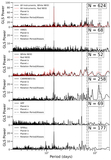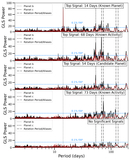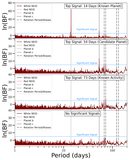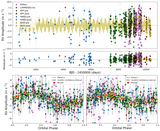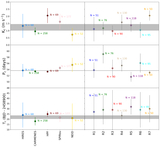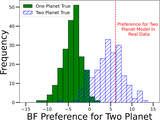Image Details
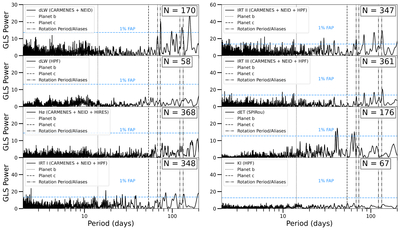
Caption: Figure 5.
Linewidth, Hα, Ca IRT, KI, and dET activity indicators of GJ 251. CARMENES/NEID line widths show strong signals near the rotation period, 68/72 days, and at longer periods. IRT I, II, and III show significant powers near 130 days, likely the rotation period of GJ 251. Meanwhile, dET shows significant peaks near 40 and 60 days, likely the second and first harmonics of the rotation period. Significantly, 14 and 54 day signals never appear in the activity indicators, except in KI, though neither are the dominant signal nor significant in power. Signals of interest highlighted are at 14, 54, 68, 73, 120, and 130 days.
Copyright and Terms & Conditions
© 2025. The Author(s). Published by the American Astronomical Society.



